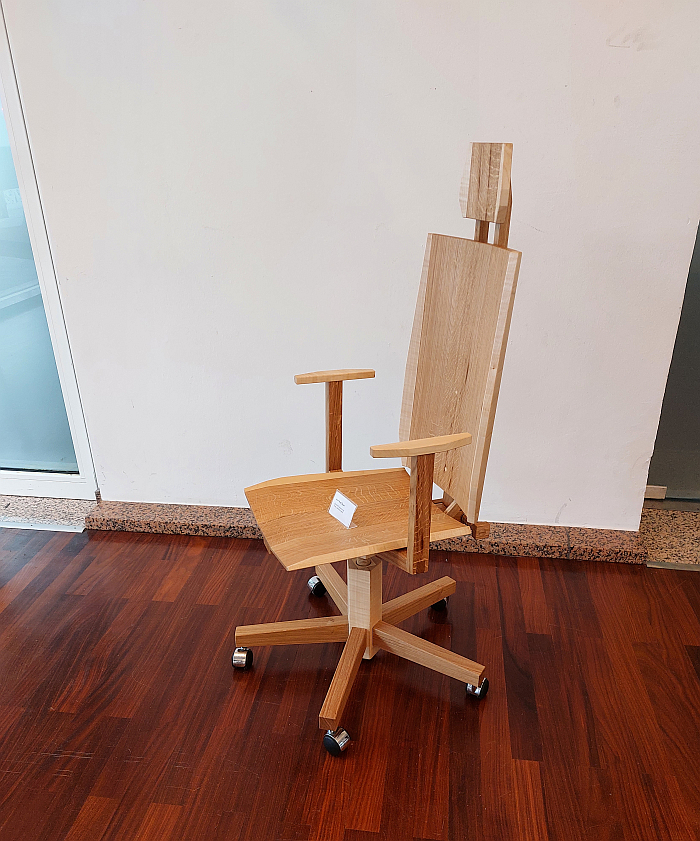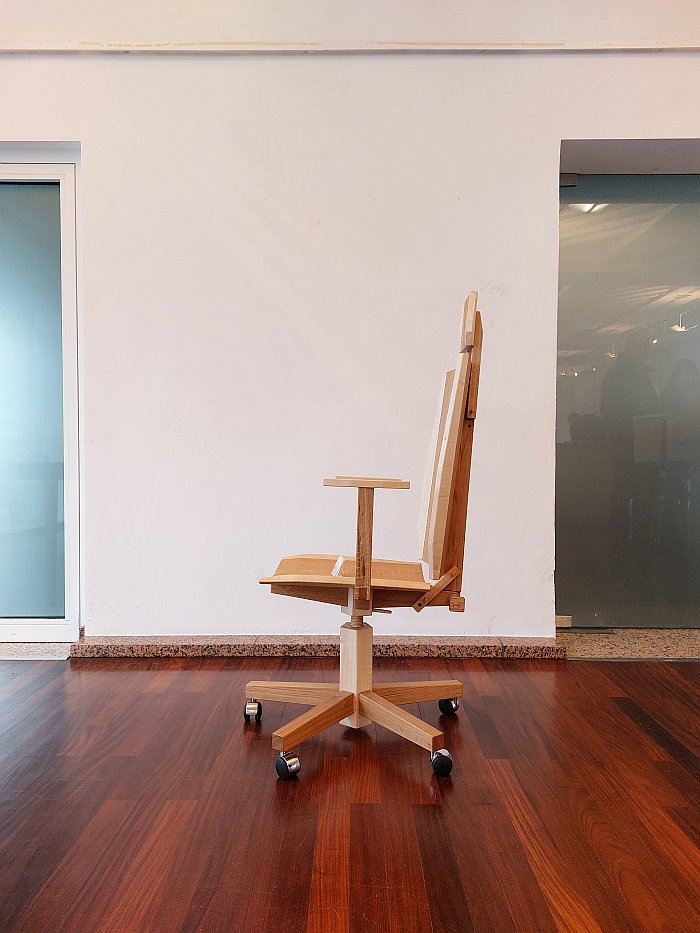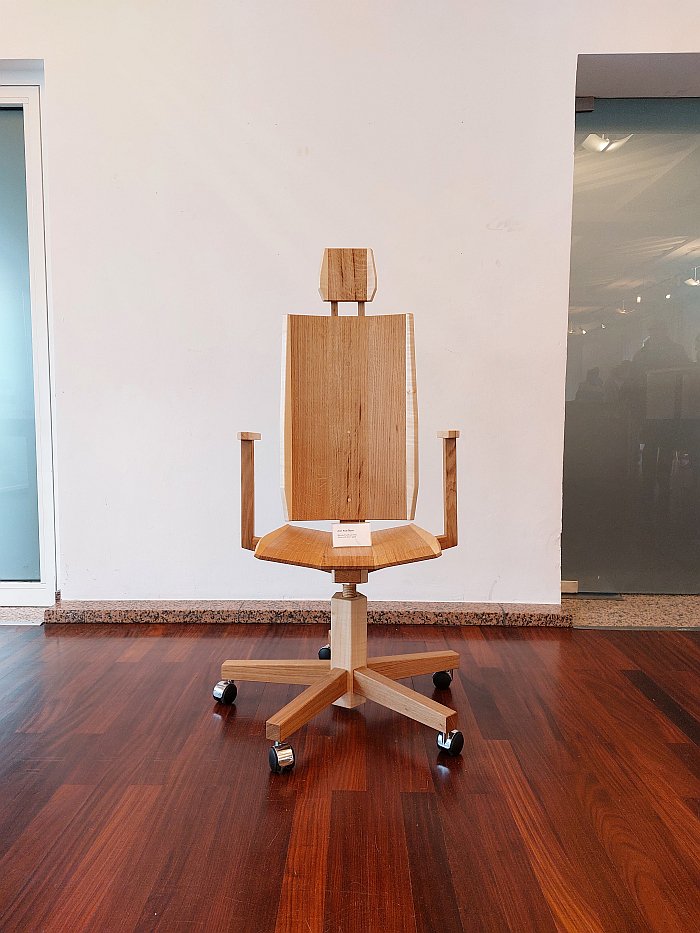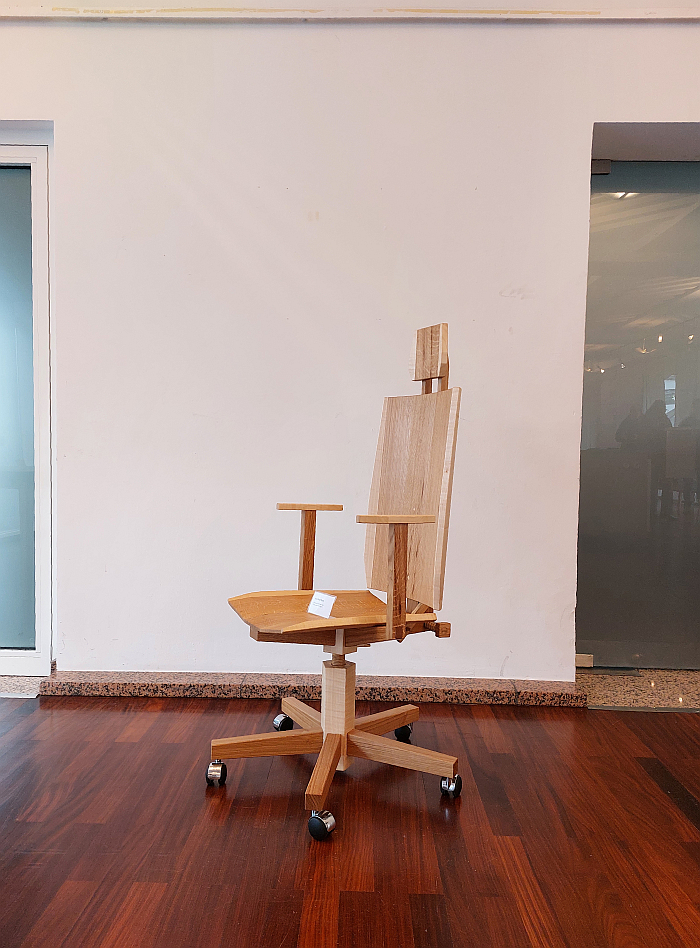
For all that interior design is often popularly considered as being about buying ever new things to place in a space, a popular appreciation of interior design many exhibitors at Passagen Interior Design Week Cologne appear determined to reinforce and encourage all to believe as an absolute truth, a lot of interior design is actually about creating custom solutions. And always was: as a concept, as a profession, interior design arises from the craft of the decorator, an individual who united a variety of complimenting crafts for the benefit of creating an interior, be that a domestic, commercial, civic, hospitality, office, whatever, interior.
And while the development of interior design as a profession may have separated it from the craft of the decorator, craft remains an important component of interior design, much as craft remains an important component of a furniture design that was craft before it evolved into design, and there can be no interior design without metalsmiths, glasssmiths, tapissier. Or carpenters. Such as the newly anointed Master Carpenters whose Meisterwerke the Handwerkskammer zu Köln regularly present as a component of Passagen Interior Design Week. For us a most fitting and appropriate place to present those Meisterwerke. And a presentation we always strive to view.
A presentation whose 2025 edition, alongside a lot of dining tables, including an awful lot of expandable dining tables, a profusion of expandable dining tables that may be an expression of a current high demand for expandable dining tables, or of a reality that an expandable dining table allows more opportunity for a carpenter hoping to become a Master Carpenter to express the range of their skills, to express their mastery of carpentry, and alongside a lot of sideboards, desks and vitrines, also featured a wooden office chair by Aron Rudi Šipak.
A work that for all it initially strikes you as a little too obvious a play with perceptions and conventions, kitschy almost, is a work that also reminds that office chairs were once wood, were wood in their earliest manifestations, as excellently exemplified by the 18th century office chairs a Thonet produced, works that were, essentially, voluminous armchairs on a massive wooden base, or by the late 18th century bespoke swivelling Windsor Chair Thomas Jefferson used in his office, when not working at his standing height desk.
Wood that over time ceded to metal, and that, primarily, because wood burns, metal doesn't, and as corporisation developed in the early 20th century office fires were one of the biggest, most feared, hazards; one thinks, for example, of Frank Lloyd Wright's 1902 Larkin Administration Building in Buffalo, New York, a company HQ that was devised, designed, with essentially nothing flammable inside by way of negating the risk to the all important customer contact and order cards.
Metal that also brought greater mobility to office seating, not least in the principle of Thomas E. Warren's Centripetal Spring Chair; metal that also brought advantages in terms of industrial scale production in comparison to wood; metal that also represented the victory of human ingenuity over the laws of nature and the limitless of the possibilities for human society.
Metal that in turn ceded to synthetic plastics as the material of choice for office chairs, not least on account of both the increased ease of industrial scale production synthetic plastics allow, and also the greater formal freedom a mouldable synthetic plastic brings over a formable, but less readily so, metal. Synthetic plastics that represented the victory of human ingenuity over the laws of nature and the limitless of the possibilities for human society. Synthetic plastic materials that for all they have unquestionably helped advance office chair design, and human society, have also harmed that society and the planet we all rely on, and thereby taught us that there are reasons for nature's laws and that the best possibilities for human society lie in respecting them not breaking them, a lesson we still need to learn, but that is there when we're ready. Thereby driving the search for alternatives in all contexts, including for office chairs. A search that while it can be for the unknown, can also involve the known. Could involve metal. Could also involve wood.
A wood that while it may still burn, not only are the risks of office fires a lot lower than they once were, and fire protection systems much improved, but the all important customer contact and order cards are now online. Behind a firewall. And a wood that can today be much more efficiently employed in an industrial scale production process that was once the case.
So why not return to wooden office chairs?
A question very much posed by Aron Rudi Šipak's Meisterwerk.
A Meisterwerk, a wooden office chair, an oak and maple office chair, that does (near) all those things we demand today of our office chairs: it's height-adjustable, has an adjustable backrest, an adjustable headrest, rolls on a five-star base, swivels. Doesn't have adjustable armrests, but, arguably, could have.
Does have a supportive concave backrest and seat, the later tapering towards the front for extra comfort while providing the full length leg support a Marcel Breuer considered so important. A seat that, as implied in the project Tani by Limeng Liu as seen at Design Post during Passagen 2025 as a component of the Universität der Künste Berlin X Zeitraum X Kvadrat project Find Your Footprint, could be functionally expanded by wood-powered resilience. As could the backrest.
Could be effortlessly upholstered, ideally with removable cushioning crafted from a locally sourced natural material that allows for ventilation and moisture management. Wool comes to mind.
Could have wooden castors. Should have wooden castors.
Can be effortlessly repaired as and when required. With any replaced parts being sustainably disposed of.
Is wood. A material found globally in a myriad varieties that therefore opens up the possibility of decentralised global production using an appropriate native wood. A material that provides a much warmer, more human, feel in a space than metal or plastic, a not unimportant consideration in furnishing a home office that also doubles as a living room. But that is also not irrelevant in office office spaces. A material that if properly managed and responsibly employed has less negative impacts on humans, society and the planet than metals or synthetic plastics. And a material that was once used for office chairs, one whose use in contemporary office chairs reminds of the value, the power, of looking to the past for answers as much as into the unknown.
We didn't get to sit on it so can't comment on its comfort or the ease of use. That said as presented in the Handwerkskammer zu Köln it did imply that there was still a goodly bit of work to be done to make it a truly robust, durable object fit for the demands of the contemporary office; elements of it, for all they were impeccably carpented, struck us as being a little to fragile, unripe, for the real world, were ideas very much still in a state of development. And it waggled in places where it probably shouldn't. Which is fine, it's a project not a product. It's a proposition not an answer. It's a transient moment on a journey not a destination.
And for all is the question, why not return to wooden office chairs?
Why not?
Aron Rudi Šipak has developed a convincing argument for, what's your argument against?
We can sadly find no information on Aron Rudi Šipak, should that change we will update.
Passagen Interior Design Week 2025 has now ended, details of the event and what you missed can be found at www.voggenreiter.com/passagen2025


